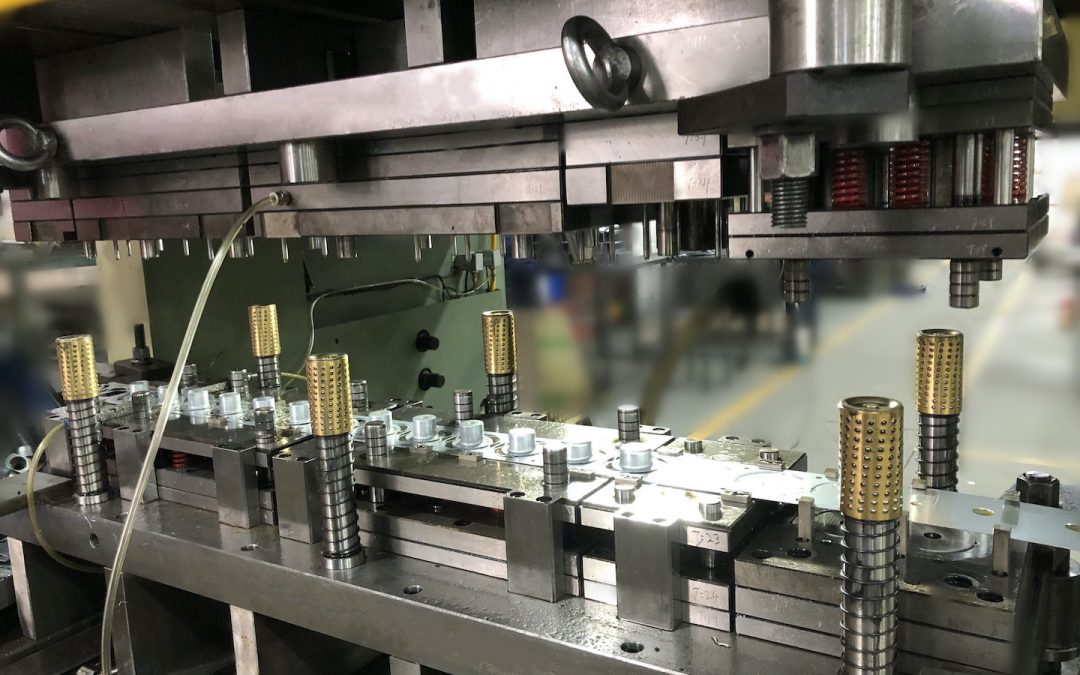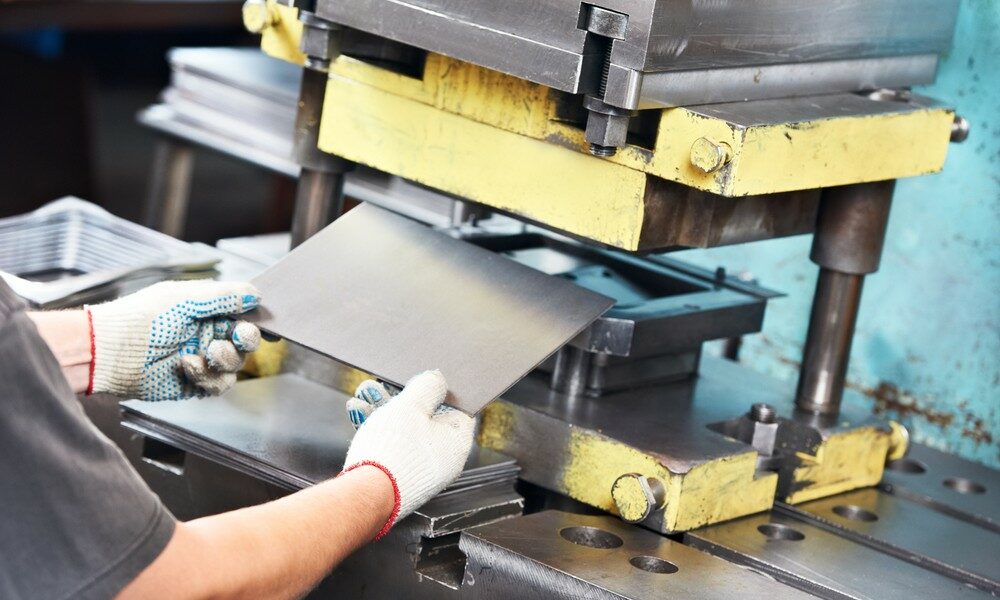Why Metal Stamping is Vital for Creating Sturdy and Complicated Components
Why Metal Stamping is Vital for Creating Sturdy and Complicated Components
Blog Article
The Evolution of Metal Stamping Procedures: Innovations and Applications
The world of metal marking processes has witnessed a transformative trip marked by constant advancement and adjustment to meet the needs of modern industrial methods. From the traditional approaches deeply rooted in background to the sophisticated innovations driving high-speed accuracy, the development of steel stamping has actually been absolutely nothing except amazing. As brand-new tooling strategies and automation locate their means into this sector, the implications for performance and quality are profound. The applications span across a spectrum of industries, each benefiting uniquely from the developments in metal stamping procedures.
Traditional Steel Stamping Strategies
Standard metal stamping strategies have long been the foundation of making procedures in different industries due to their efficiency and precision. The process involves forming a metal sheet or coil into a preferred form by pressing it in between a die and a strike. This approach is extensively used for producing large amounts of components with high accuracy at a rapid rate.
One of the essential advantages of typical steel stamping techniques is the capacity to keep tight tolerances, making certain that each component satisfies the needed specs constantly. This level of precision is important in markets such as vehicle, aerospace, and electronics, where also small discrepancies can bring about considerable issues.
Moreover, typical steel marking strategies provide affordable solutions for automation contrasted to various other producing techniques. The capacity to mark components in quick succession lessens manufacturing time and lowers labor costs, making it an attractive alternative for companies seeking to enhance their production procedures.
Development of High-Speed Stamping

One of the essential benefits of high-speed marking is its capacity to maintain accuracy and consistency also at sped up handling speeds. This accuracy is crucial in sectors where limited resistances and detailed layouts are required. In addition, high-speed stamping permits for the processing of a vast array of products, including aluminum, stainless steel, and copper, more increasing its applicability across different sectors.
Furthermore, the emergence of high-speed marking has actually allowed makers to meet the growing need for complicated components in industries such as automotive, aerospace, and electronic devices (Metal Stamping). By leveraging the speed and precision of high-speed stamping technology, firms can boost their competition in a rapidly advancing market landscape
Innovations in Tooling Modern Technology
With the development of high-speed marking enabling enhanced accuracy and performance in steel creating processes, the field of metal stamping has seen significant developments in tooling modern technology. Tooling innovation plays a critical duty in steel marking procedures, influencing variables such as product quality, manufacturing speed, and overall cost-effectiveness. One crucial innovation in tooling innovation is the development of intelligent tooling systems that incorporate sensors and monitoring gadgets to supply real-time information on the stamping procedure. These systems can identify issues such as device wear or you could check here imbalance, permitting immediate modifications to preserve ideal performance.
By making use of these advanced products, tooling producers can generate passes away and molds that stand up to the high stress and temperatures entailed in metal marking processes, resulting in longer device life and improved manufacturing performance. On the whole, these advancements in tooling innovation have revolutionized the steel stamping industry, permitting producers to achieve higher levels of precision, productivity, and price financial savings.
Integration of Automation in Stamping
As automation remains to improve the landscape of steel marking procedures, the combination of automated systems has come to be significantly widespread in contemporary manufacturing facilities. Automated systems supply various advantages in steel marking, consisting of enhanced efficiency, improved precision, and improved safety and security. By including automation into stamping processes, manufacturers can decrease cycle times, lessen product waste, and enhance manufacturing throughput.
Among the key components of automation in stamping is making use of robot arms for jobs such as product handling, part manipulation, and high quality assessment (Metal Stamping). These robot systems can execute repeated and labor-intensive tasks investigate this site with speed and accuracy, maximizing human drivers to concentrate on more complicated procedures. Additionally, automation enables for real-time monitoring and modification of stamping procedures, leading to greater total procedure control and quality control
Additionally, the combination of automation in marking allows makers to accomplish constant component quality, meet tight tolerances, and enhance overall productivity. As modern technology remains to advancement, the function of automation in steel stamping Source procedures is expected to increase further, driving advancement and effectiveness in the manufacturing sector.
Applications Throughout Diverse Industries
Including steel stamping procedures throughout varied industries showcases the convenience and versatility of this production technique. Additionally, the appliance industry benefits from metal marking procedures to make parts for fridges, washing makers, and various other family home appliances. The adaptability of metal stamping procedures makes it a valuable manufacturing method throughout numerous markets, showing its significance in modern-day manufacturing processes.
Final Thought

Report this page